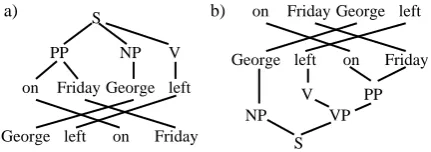Empirical Lower Bounds on the Complexity of Translational Equivalence
Full text
Figure




Related documents
In addition, a predictive model like this is also beneficial when considering risk factors. In our study, the univariate logistic regression model suggested 5 risk factors
The analyses of micro-level practices available to small-scale farmers in Africa for adapting to climate change suggest several different policy options, including the development
and (2) multitask loss for jointly modelling event class distribution (i.e. event classification) and event temporal structures (i.e. regres- sion for event boundary estimation)..
The combination with a higher value of cohesion, separation and silhouette coefficient and comparatively lower time for clustering is selected as optimal combination
how the corporate social responsibility (CSR) interventions toward the mining community, commissioned by a gold mining company in Guinea, are.. interpreted by the
For children, a higher unemployment rate is associated with a 1.37 percentage point (4.69%) higher probability of public health insurance coverage, with the result that there is
For the poorest farmers in eastern India, then, the benefits of groundwater irrigation have come through three routes: in large part, through purchased pump irrigation and, in a

